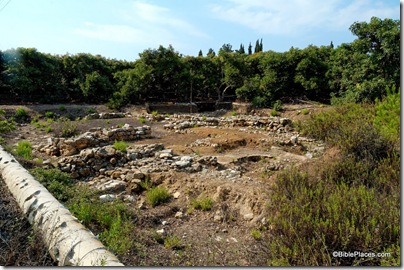From a press release from the University of Haifa:
The remains of a Minoan-style wall painting, characterized by a blue background, the first of its kind to be found in Israel, was discovered in the course of the recent excavation season at Tel Kabri. This fresco joins others of Aegean style that have been uncovered during earlier seasons at the Canaanite palace in Kabri. “It was, without doubt, a conscious decision made by the city’s rulers who wished to associate with Mediterranean culture and not adopt Syrian and Mesopotamian styles of art like other cities in Canaan did. The Canaanites were living in the Levant and wanted to feel European,” explains Dr. Assaf Yasur-Landau of the University of Haifa, who directed the excavations.
The remains of a Canaanite city from the Middle Bronze Age (2000-1550 B.C.) have been exposed at Tel Kabri, next to Kibbutz Kabri near Nahariya. A palace for the city’s rulers stands in the center of the city, which was the most important of the cities in the Western Galilee during that period. Excavations began at Tel Kabri in 1986, conducted by the late Prof. Aharon Kempinski, and were halted in 1993. Over the past years, excavations have been renewed by teams directed by Dr. Yasur-Landau of the Leon Recanati Institute for Maritime Studies at the University of Haifa and Prof. Eric Cline of The George Washington University. Tel Kabri is unique in that after the city was deserted, no other city was built over its remains. Therefore, this is the only Canaanite city that can be excavated in its entirety. The palace too, which has been measured with geophysical tools at 1 to 1.5 acres, is the only such palace of this period that can be excavated fully. “The city’s preservation enables us to get a complete picture of political and social life in the Canaanite period. We can reveal whether or not it had a central government, whether taxes were levied, what sort of agriculture there was and how politics were conducted at the time,” Dr. Yasur-Landau explains.
The full press release is here, and an Arutz-7 story is here. If you’ve been to Crete, you may be a bit disappointed with the photos.
HT: Joe Lauer



